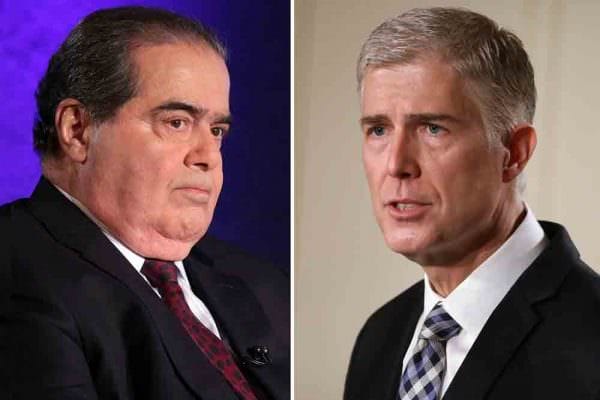By Jeff Knox : Opinion


Buckeye, AZ –-(Ammoland.com)- It is extremely disappointing to report that the Supreme Court of the U.S. has rejected the petitions for their review of the cases Peruts v. San Diego County, and Binderup v. Sessions, but it’s better to have the cases rejected than to have them heard and lost.
And unfortunately, winning either of these cases with the current justices wasn’t anywhere close to a sure bet.
The Binderup case challenged the practice of a lifetime loss of gun rights for a non-violent crime, while Peruta challenged California’s “may issue,” concealed carry permitting system, as it was being applied by San Diego County. Both were being closely watched by rights advocates nationwide, especially Peruta, as it could have finally affirmed that “the right of the people to keep and bear arms,” actually does include a right to carry a gun for lawful purposes outside the home. It would have also addressed the divide between circuits regarding the standards to be applied in ruling on Second Amendment cases.
Binderup could be considered a win, as it was decided in favor of the plaintiffs in the 3rd Circuit, and that decision will be allowed to stand, but Peruta, which was decided in favor of the government in the 9th Circuit, will also be allowed to stand, and that is a travesty.
There are three standards for testing a law’s constitutionality, based on how directly the law impacts individual rights. The lowest level is called “rational basis.” To pass this test, those challenging the law must show that it has no rational relationship to advancing a particular government objective. The second level, known as “intermediate scrutiny” is almost the same, but places the burden of proof on the government to prove that it has a compelling reason for the law. The highest level is called “strict scrutiny.” This is supposed to be applied whenever the challenged law interferes with a “fundamental” right, particularly those enumerated in the Bill of Rights, or if the law appears to have a component based on the race, gender, ethnicity, or religion of individuals. Under “strict scrutiny,” the government must prove a compelling reason for the law, and prove that the law is the least restrictive way of realizing that compelling reason. Generally speaking, almost anything can be justified under “rational basis” and “intermediate scrutiny” a – if the judge supports it – but laws that are examined under “strict scrutiny” usually fail.
It seems obvious to rights advocates, that “strict scrutiny” should be the standard applied to any Second Amendment case, especially in light of the McDonald decision’s defining of Second Amendment rights as “fundamental.” But courts have tended to apply “intermediate scrutiny” or “rational basis,” because if they applied “strict scrutiny,” the government would have to prove that the laws actually serve a valid purpose, and as anyone who has studied gun laws knows, they don’t work, therefore they cannot be proven to be serving a compelling government interest, much less that they are narrowly tailored to be the least restrictive possible means of accomplishing those goals.
The decisions of the Supreme Court not to review these cases, demonstrates something that The Firearms Coalition has been saying since before the death of Justice Antonin Scalia: The Supreme Court does not have a pro-rights majority, and will not have one until at least two more justices are replaced.
Since Heller and McDonald, the Court has had several opportunities to review Second Amendment cases related to carry outside the home, and restrictions on firearms based on their appearance or the capacity of ammunition feeding devices. In every case, the Court has refused to take up the issue. This was true when Scalia was still alive, and it remains true now that Gorsuch is on the Court.

The good news that comes out of the Court’s decision to reject the Peruta petition, is that it appears to confirm that Justice Gorsuch is indeed solidly in the pro-rights camp. He joined in a dissent penned by Justice Thomas, contending that the Court should have agreed to hear Peruta, and settle these important issues. That give us some hope for the future. But it was Justices Ginsburg and Sotomayor who dissented from the decision rejecting Binderup, suggesting that they think they could have won that one, and that rights supporters might have dodged a bullet.
The “liberal” wing of the Court has a solid block of 4, proven, anti-rights justices, but the “conservative wing appears to be split on the issue. Chief Justice Roberts and Justice Kennedy have indicated a reluctance to delve back into Second Amendment questions, while Justices Thomas, Alito, and now Gorsuch seem much more inclined to settle the issues.
Rumor mill in D.C. is suggesting that Justice Kennedy, who is 80, might be preparing to retire, possibly at the close of the current term. A Trump replacement for Kennedy would probably shore up the pro-rights majority, but even if Kennedy’s replacement is as stalwart as Thomas, that would still be no guarantee for Second Amendment watchers. Roberts’ reticence to take any action that might shake up the judiciary, is well established, and 4 votes for rights is not enough to win the day.
Justice Ginsburg who is 84 this year, has been expected to retire any day for at least a decade, but she keeps charging ahead, and it is virtually inconceivable that she would willingly give up her seat knowing that Trump would name her replacement. If she is physically able, expect Ginsburg to hold out to at least the middle of 2020, when her retirement would become a major election issue in the presidential race.
The Court’s refusal to hear these cases is very disappointing, but not unexpected. The most promising case for getting a hearing, is a challenge to Maryland’s draconian “assault weapon” and “high-capacity” magazine bans. That petition won’t get to the Court until next term, at the earliest, though. In that case, the 4th Circuit blatantly misrepresented a part of the Heller decision, and the justices tend to be very touchy about that sort of thing, so it is very unlikely that they will allow that to stand. But they could just “summarily reverse” the decision, sending it back to the Circuit without hearing or offering a ruling. Right now, that seems like a likely possibility, but predicting Supreme Court actions and outcomes is like betting on roulette. Our energy is much better spent applying pressure to legislators.

About Jeff Knox:
Jeff Knox is a second-generation political activist and director of The Firearms Coalition. His father Neal Knox led many of the early gun rights battles for your right to keep and bear arms. Read Neal Knox – The Gun Rights War.
The Firearms Coalition is a loose-knit coalition of individual Second Amendment activists, clubs and civil rights organizations. Founded by Neal Knox in 1984, the organization provides support to grassroots activists in the form of education, analysis of current issues, and with a historical perspective of the gun rights movement. The Firearms Coalition has offices in Buckeye, Arizona and Manassas, VA. Visit: www.FirearmsCoalition.
